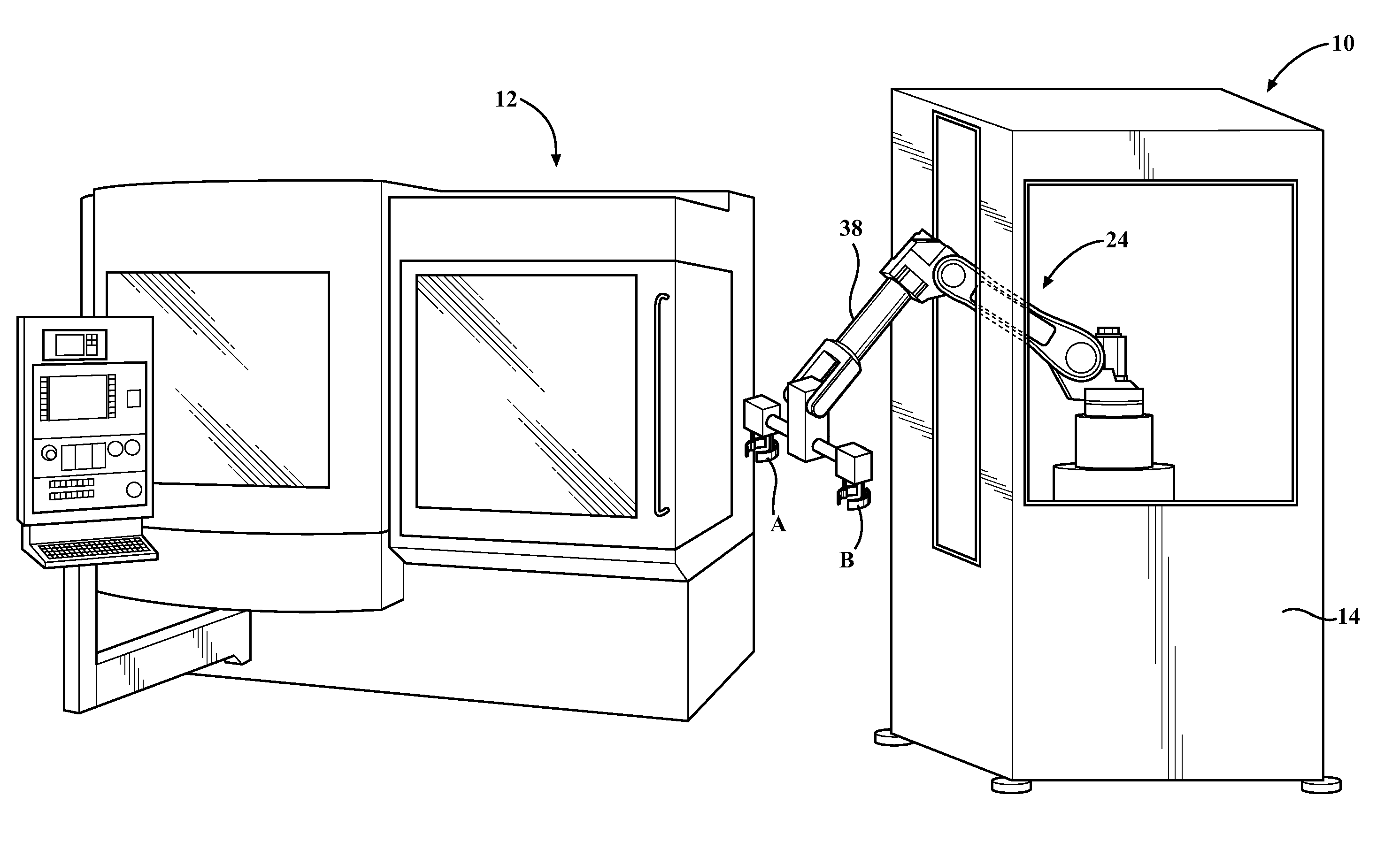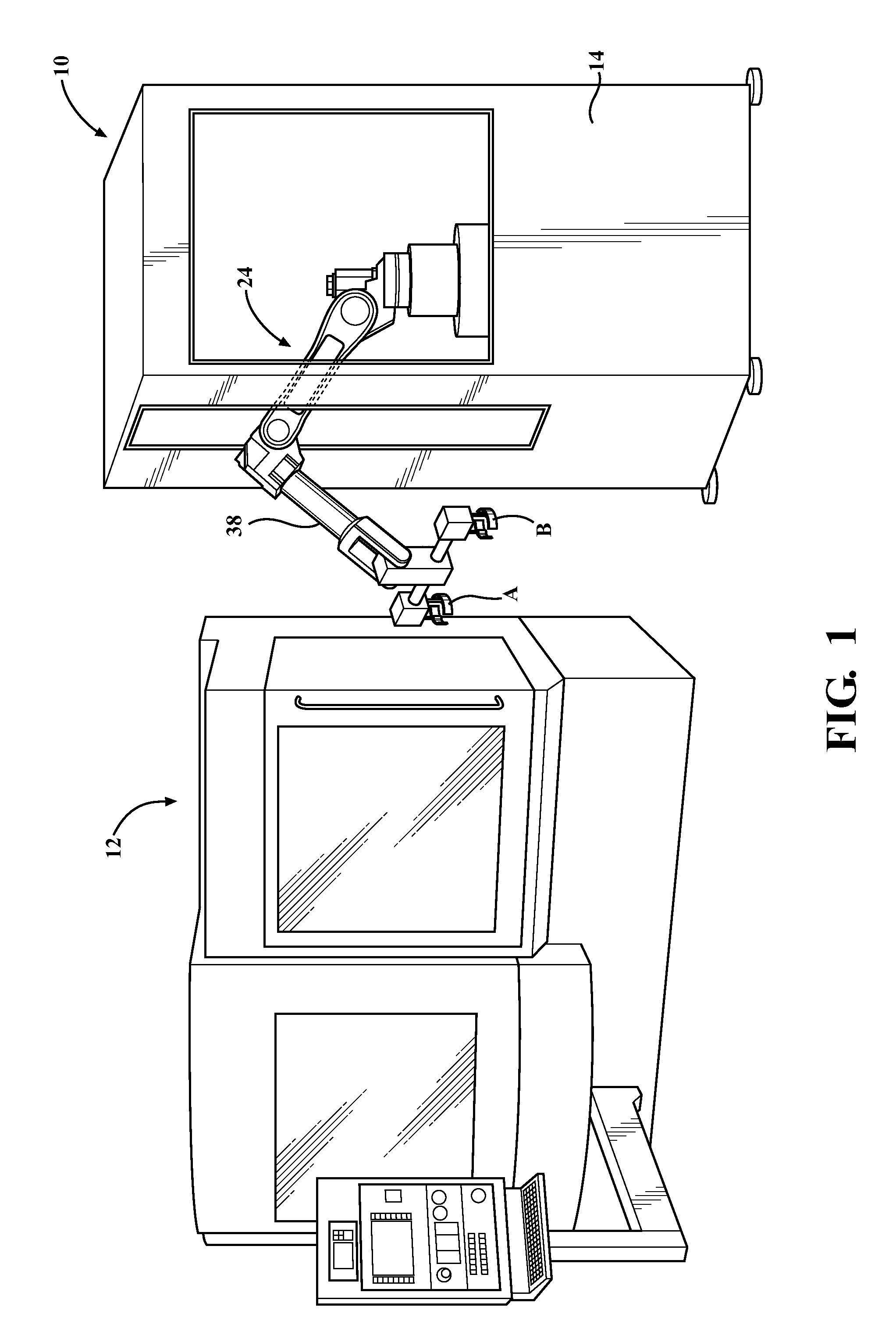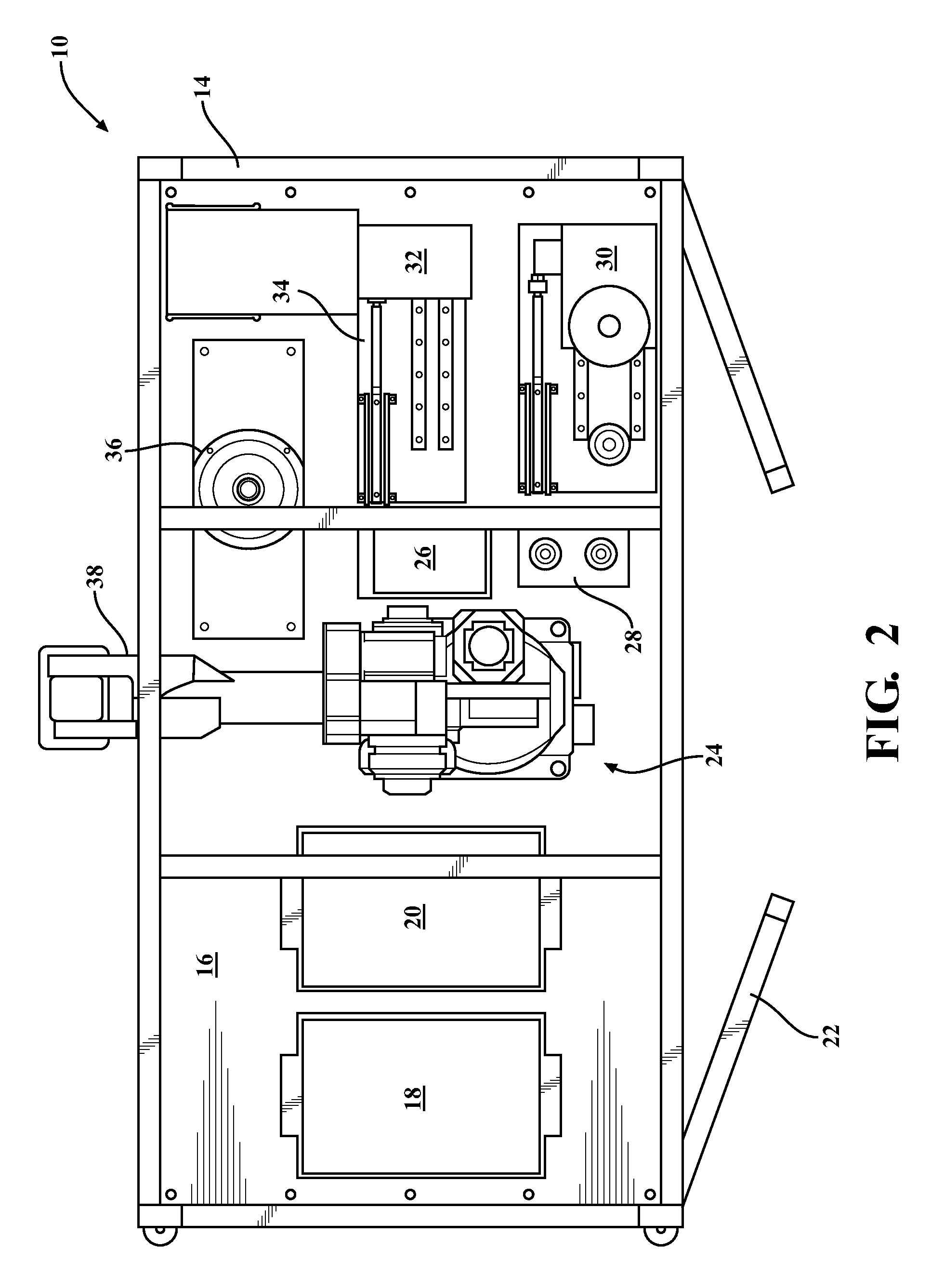Flexible automation cell for performing secondary operations in concert with a machining center and roll check operations
a technology of secondary operations and machining centers, applied in gear teeth, gear-teeth manufacturing apparatus, instruments, etc., can solve the problems of wasting shop space, requiring substantial manual labor, and time-consuming multi-stage processing, so as to improve the speed of producing finished parts and eliminate labor
- Summary
- Abstract
- Description
- Claims
- Application Information
AI Technical Summary
Benefits of technology
Problems solved by technology
Method used
Image
Examples
Embodiment Construction
[0020]As illustrated in FIG. 1, the automation cell 10 of the present invention coordinates and is disposed adjacent to a machining center 12 that performs primary operations on workpieces. Typical machining centers constitute numerically controlled milling machines or lathes or other specialty machines such as the gear grinder employed in the preferred embodiment of the present invention. The machining centers could constitute “tool changing” machine centers employing a variety of cutters that can be alternatively employed by the machine such as tool changing milling machines.
[0021]As has been noted, the preferred embodiment of the present invention relates, among other things, to the automation cell 10 for performing secondary operations on a gear after a gear blank has been initially ground in a modular gear grinding machine 12 such as is illustrated in FIG. 1. These commercially available machines may be equipped with one or more work spindles which may be automatically moved in...
PUM
 Login to View More
Login to View More Abstract
Description
Claims
Application Information
 Login to View More
Login to View More - R&D
- Intellectual Property
- Life Sciences
- Materials
- Tech Scout
- Unparalleled Data Quality
- Higher Quality Content
- 60% Fewer Hallucinations
Browse by: Latest US Patents, China's latest patents, Technical Efficacy Thesaurus, Application Domain, Technology Topic, Popular Technical Reports.
© 2025 PatSnap. All rights reserved.Legal|Privacy policy|Modern Slavery Act Transparency Statement|Sitemap|About US| Contact US: help@patsnap.com



